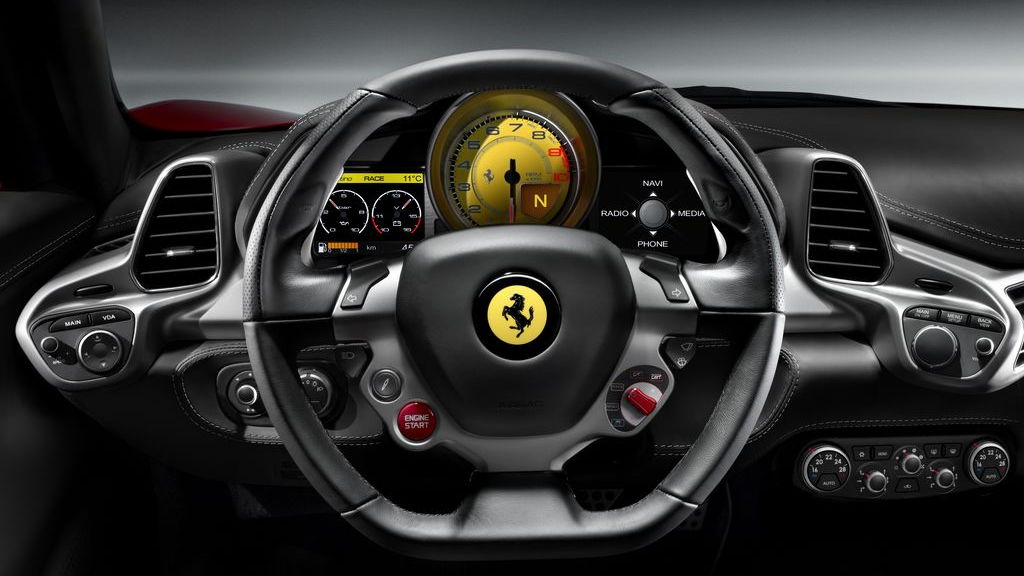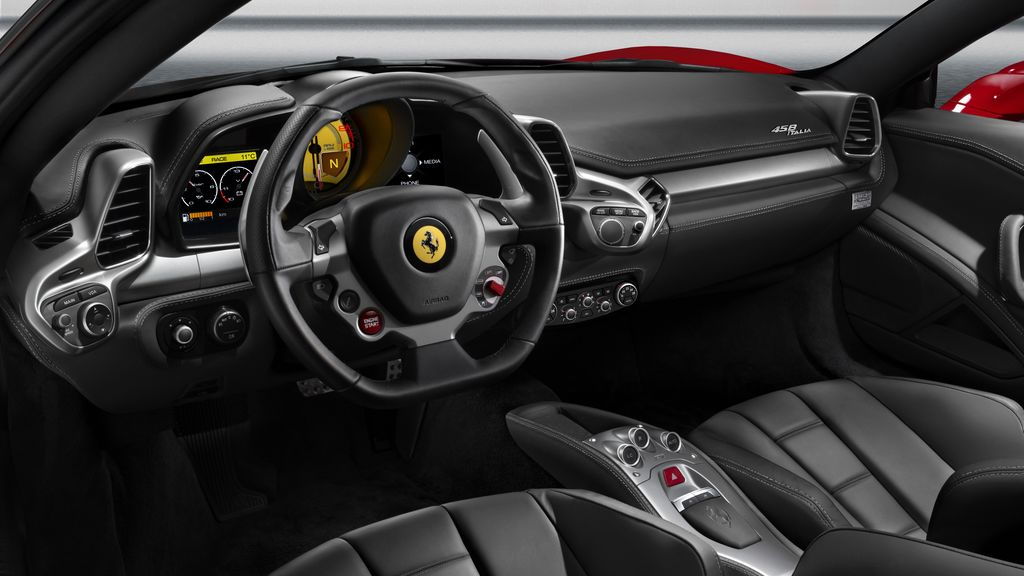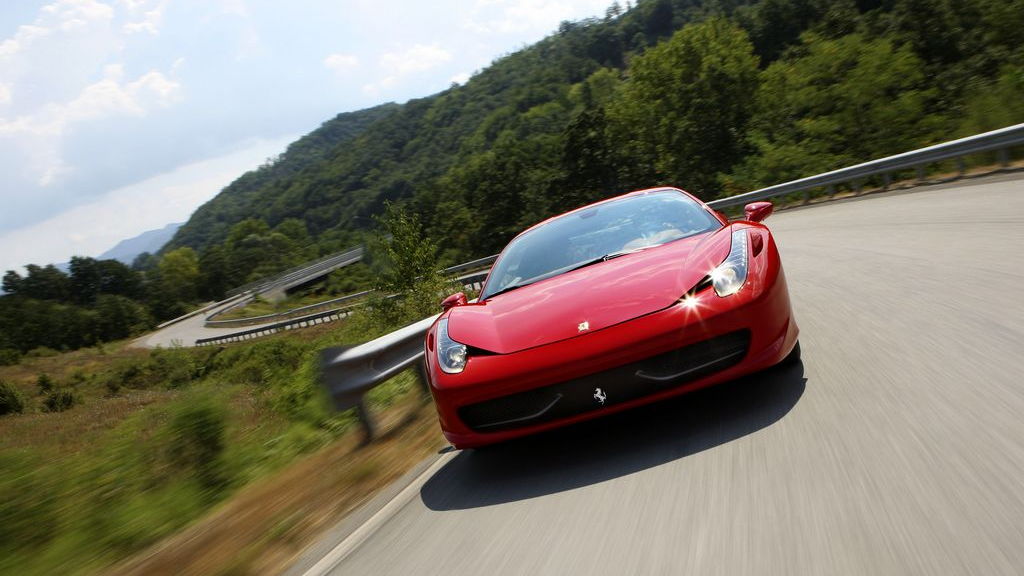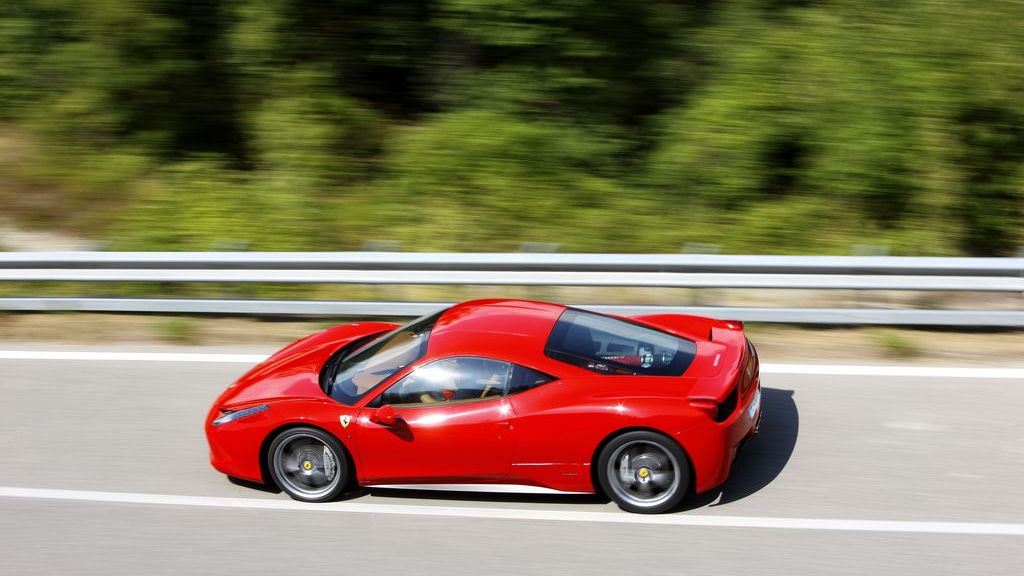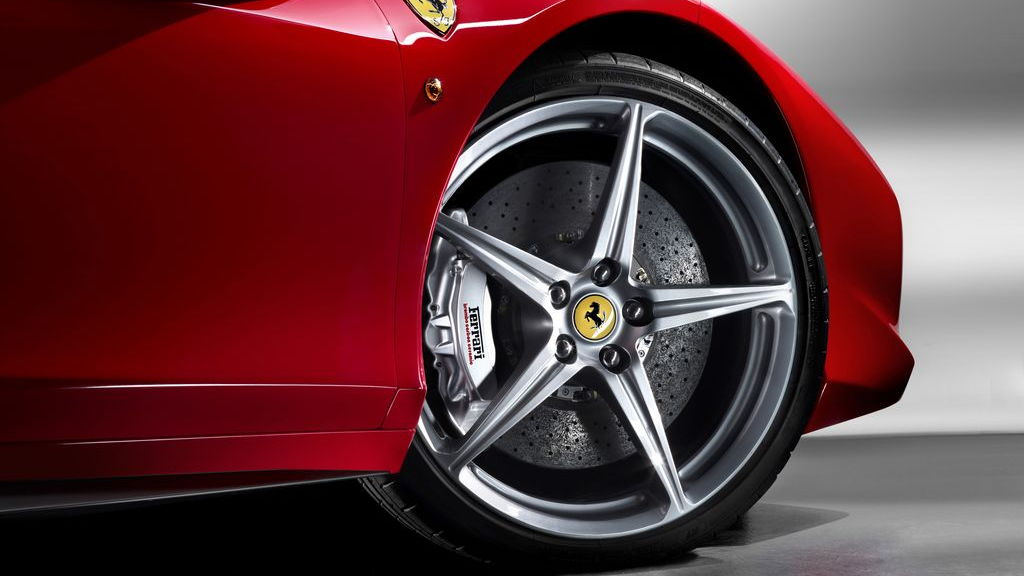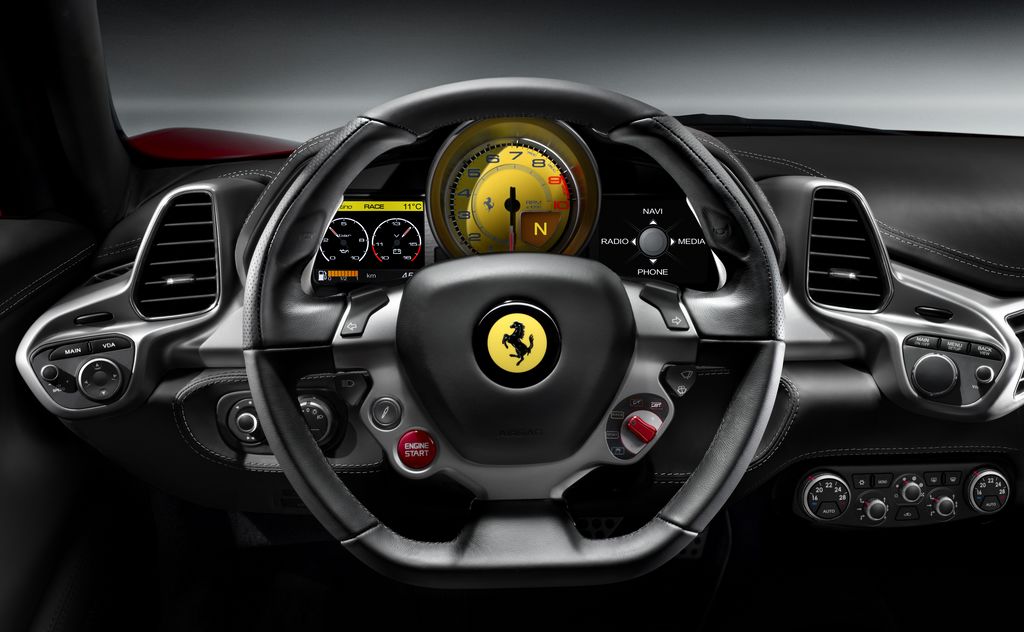
2010 Ferrari 458 Italia
In the run-up to the official unveiling of the all-new 2010 458 Italia at next month’s Frankfurt Auto Show, Ferrari has released a flood of new details and images, including the first shots of the car’s interior and advanced steering wheel.
While the outgoing F430 was largely based on the 360 Modena that preceded it, the Ferrari 458 Italia is a completely new car from every point of view: engine, design, aerodynamics, handling, instrumentation and ergonomics are all new.
Its new 4.5-liter V-8 engine produces 570 horsepower and 400 pound-feet of torque, enough to blast the car to 62 mph in less than 3.4 seconds and onto a 202 mph top speed, yet it uses less fuel than the car it replaces--the already amazing F430. But these raw figures are just the start of the technological story of Ferrari’s newest model.
The car’s interior, steering wheel and instrument binnacle also represent a significant step forward in the concept of the ergonomic interface between driver and car.
In fact the main commands are now grouped on the steering wheel, the secondary commands are set in two satellite pods either side of the dash and there are now comprehensive instrument displays on the panel ahead of the driver. These solutions represent an important safety aspect, enabling the driver to concentrate fully on driving.
Working closely with the Ferrari Styling Center, engineers have reinterpreted the positioning of the major commands to provide a more driver-oriented cockpit. All steering-column mounted stalks have been eliminated, with the indicators, full beam, flash and windscreen wiper functions now being activated by buttons on the steering wheel boss. The button to select the shock absorber setting is now positioned next to the ‘Engine start’ button where it falls readily to hand. Behind the wheel are a number of secondary functions, such as the stereo, while the gearbox paddles are now longer, making shifts even easier from any steering angle.
The right-hand satellite pod on the dash incorporates controls for the infotainment, Bluetooth connectivity, satnav, the digital speedo and rear parking camera. Clustered on the left-hand satellite pod are the optional cruise control, buttons for choosing the video setting of the left-hand dash TFT screen and the on-board computer interface. The latter controls the trip computer, the Vehicle Dynamic Assistance (VDA) and the display of the car’s set-up.
The VDA monitors the operating parameters of the most important areas of the car--engine/gearbox, tires and brakes. The VDA is enabled in the following manettino settings--Race, CT off and CST off--and provides visual confirmation of the status of each component based on an algorithm from parameters reading lateral and longitudinal acceleration, revs and speed. This enables the driver to assess the ideal operating conditions for the car. There are three status settings: WARM-UP (operating temperature too low), GO (ideal operating conditions) and OVER (one or more components are no longer at their optimum level and need cooling).
For more information on the 458 Italia, check out our previous story by clicking here. Otherwise, check out Ferrari’s official website (www.ferrari.com), which includes an exclusive video interview with Paolo Pininfarina, chairman of Pininfarina, who provides an in depth insight into the car’s design philosophy and exterior styling. The next release on the official site will include an analysis of the car’s performance characteristics with an interview with seven-times F1 World Champion Michael Schumacher.
